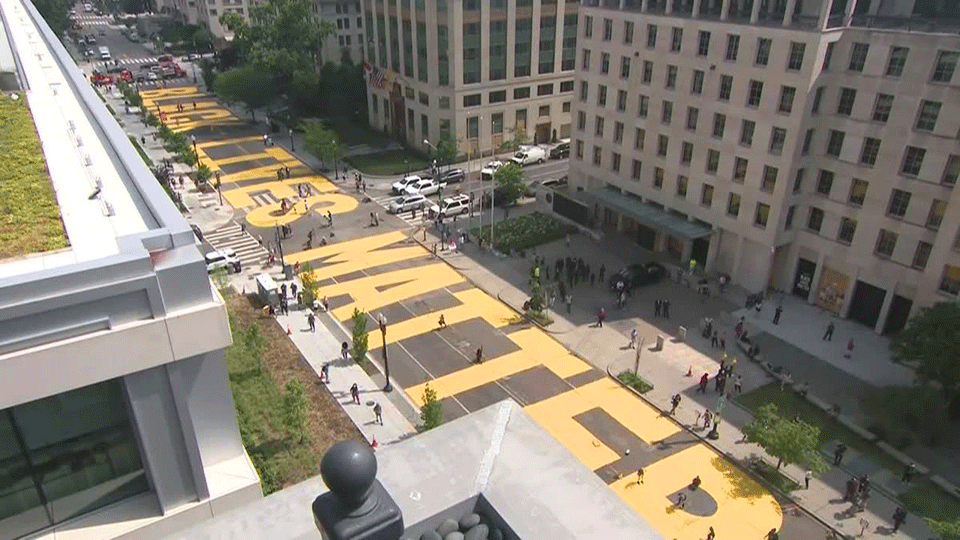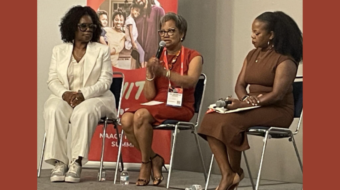
After the Black Lives Matter uprisings in May and June, which were prompted by the racist police killing of George Floyd in Minneapolis and the slaying of Breonna Taylor in Louisville, few people in the world are unaware of the intensity of systemic racism in the U.S. From top to bottom, systemic racism dominates the U.S. criminal justice system: over-policing in communities of color, police training that emphasizes the prejudicial guilt and danger of Black and brown people, racial profiling, a school-to-prison pipeline that denies education to Black and brown youth, massively disproportionate imprisonment of Black and brown men and women, racist use of capital punishment, over-militarized police forces, racially disproportionate sentences for Black and brown offenders––to name some of the more prominent features.
During the Black Lives Matter protests, the demand to defund the police became a rallying cry. According to some sources, state and local governments in the U.S. spend a total of $195 billion on policing. They typically do not require officers to live in the jurisdiction they patrol, which reinforces racial segregation and racist views of communities of color. This situation results in outsiders using violence and coercion to dominate communities in which they don’t live. Besides this, most states and localities provide immunity from criminal prosecutions or civil judgments for police actions deemed by investigators to be “justified.” This policy leads to biased internal investigations, as scholar Moon-Kie Jung has shown in the book Beneath the Surface of White Supremacy. Police self-investigation also results in the demonization of the victims of police violence and a crisis of legitimacy of government authority and relationships with afflicted communities.
Police violence and brutality found to be unjustified, on the other hand, are systematic in the U.S. The Action Center for Race and the Economy found in a study of just 12 cities, “a total of nearly $878 million in bond borrowing to cover police related settlements and judgments.” In other words, police assaults and abuses are so rampant that many cannot be dismissed by official investigations, requiring legal settlements and payouts to victims. Because these payouts are often so large, localities have to sell bonds to raise the money to cover lawsuits and settlements. When interest on this debt is added to that total, those 12 cities owed $1.73 billion. Bond brokers and Wall Street investors collect massive fees and profits from police brutality.
Some pro-reform politicians, instead of defunding, are calling for more training and more incentives for police. As sociologist Alex S. Vitale has shown in his book, The End of Policing, police receive plenty of training. One of the most notorious forms is the “warrior mentality” taught by expensive private law enforcement training groups. Vitale shows, in this mentality, cops are trained that the communities they patrol are their enemies, and that every encounter with civilians is potentially deadly. This gives them a right to ignore laws governing their behavior, disregard the well-being of civilians, and escalate the violence of their actions.
Because so many political and financial resources and coercive functions are invested in police power and arrayed against communities of color, people correctly regard the police as an institution of white supremacy. Research shows that so many racist reactions whites have about Black or Latino people are related to stereotypes about danger and criminality. The portrayal in media and in political campaigns about criminality fuel anti-Black racism. This anti-Black racism and fear circles back to prop up political demands for more resources for police and for anti-Black social policies. This dynamic is foundational to U.S. systemic racism.
Defunding the police will lead to higher crime rates, advocates for the police insist. They point to a recent bump in crime rates in some cities as evidence. However, higher crime rates have come when vast amounts of public resources are spent on policing. The number of police and the quantity of their military-style equipment are at an all-time high. More policing, more money for policing is not the answer to higher crime rates. Police simply do not solve crimes; they do not stop crime. A combination of social policy and cultural transformation is needed instead. Jobs with living wages, economic security, opportunities for quality education, meaningful civic identity, the recognition of worth in currently aggrieved communities, and full and equal participation in U.S. social life are baseline requirements for social change.
In short, an end to systemic racism.
But systemic racism will not end because some city leaders participate in painting “Black Lives Matter” on the street or a few statues of racists are replaced. Those are valuable gestures, but deeper social changes are absolutely necessary. Otherwise, these are mere gestures.










